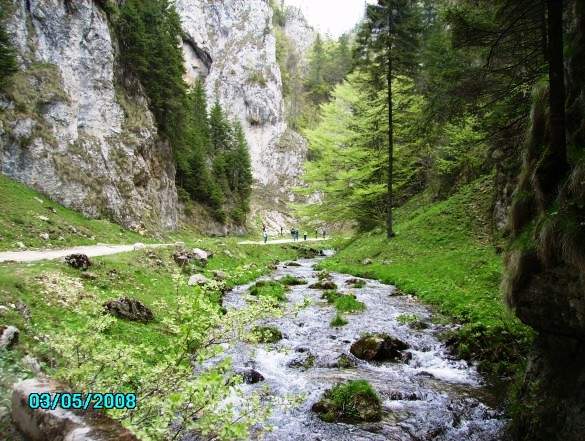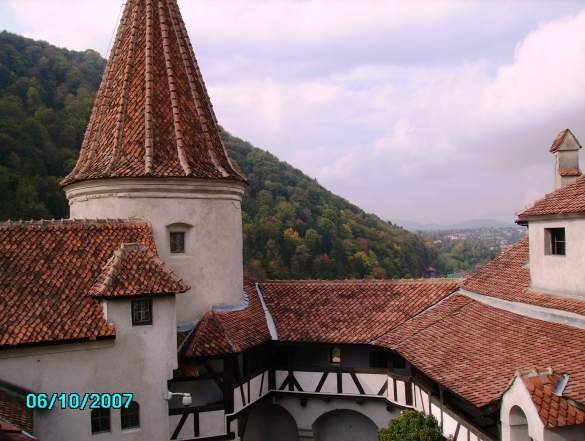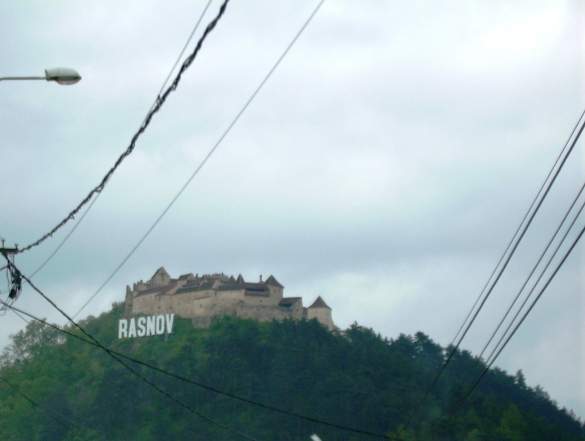During the trips we made in our home country, Romania, we had the opportunity to meet the welcoming people and discover the peaceful rural settlements in Maramures, taste the delicious food and admire the pristine landscapes in Moldavia, visit and take pictures of numerous natural attractions, monuments and historical sites in Transylvania.
Accommodation and visiting the natural attractions of the Rucar-Bran Passage
There are many places in Romania that we enjoyed visiting, but one of our favorite is the Rucar-Bran Passage, in Southern Carpathians, heavily visited by both Romanian and foreign tourists. The agrotouristic pensions from Rasnov, Zarnesti, Bran, Moieciu, Dambovicioara and Rucar offer decent and affordable accommodations and traditional Romanian meals. For an extra charge, some of them provide ATV tours, as a motorized alternative to hiking. Otherwise, if you are a hotel-type of traveler, you will be happy to know that there is a wide range of hotels in the area from which you may choose.
We’ve stayed at few different pensions in the villages of the Rucar-Bran area, but the ones we found most welcoming were those from Upper Moieciu (Moieciu de Sus) and Lower Moieciu (Moieciu de Jos) villages. Here you can really feel like you live in the middle of nature: everything around is green and the more isolated the pension is, the greater your chances to taste the fresh cold water straight from a mountain spring or fishing for trout in the rapid creek that crosses the courtyard. [PHOTO: Mountain spring.jpg] Large forests invite you to long, relaxing walks during summer, while the ski slopes from Gradistei Gorge are perfect for winter sports.
Outdoor activities
The Rucar-Bran Passage is famous for its sightseeing scenery (there are lots of opportunities for photographers), but visitors can choose from a wide range of outdoor activities too: hiking (the Dambovicioara Gorge area is preferred by hikers who come here), climbing, skiing and snowboarding (the Bran-Zanoaga ski slope with a length of 1,000 meters is available during most part of the year due to the artificial snow cannons that are used when the weather gets warmer), while the castles, museums and monasteries in Bran and Rasnov are for those who come here to discover the cultural attractions as well. [PHOTO: Hiking the Dambovicioara Gorge.jpg]
In terms of natural attractions, the Edelweiss (Florea de Colt), Gentiana (Gentiana) and Dianthus (Garofita Pietrei Craiului) are rare species of flowers, protected by law, which grow on the rocks surrounding the Bran area.
The local fauna is typical for that of Central European mountain region and is represented by species such as the wolf, the bear, the fox and the wild boar. The climate is temperate continental with strong alpine (mountain) climate influences. You should also know that the winds can be very strong sometimes, especially during autumn and winter months.
Bran Castle: Home of the Dracula legend
Bran Castle, built in the 14th century, is the place this region is most popular for. It is located in Bran village, 190 km from Bucharest, Romania’s capital, and has a rich history: over the centuries it has been the residence of Queen Mary, Princess Ileana and King Ferdinand. However, the reason why Bran castle has become so popular among foreign tourists during the past decades is because it is supposed that Prince Vlad Tepes (also known as Dracula, thanks to the namesake novel by Irish author Bram Stoker) had lived here – although, according to historians, he didn’t. The chronicles describing the harsh punishments thieves and robbers underwent during the reign of Prince Vlad Tepes were the inspiration for Bram Stoker, creator of the Dracula, the Vampire character.
Currently, the Bran Castle is a museum that houses valuable objects that belonged to its nobile residents, such as unique, centuries-old pieces of wooden furniture, jewelry, paintings, weapons and armors.
Dambovicioara Cave
The Dambovicioara Cave, another major tourist attraction of this area, is located 20 km south-west of Bran, in the Piatra Craiului Mountains. The cave was the result of the erosion made by the Dambovicioara river for millions of years. The road to the cave was also build by the action of the river, winding between high cliffs and creating a picturesque mountain landscape. Over the centuries, Dambovicioara Cave served as shelter for local inhabitants, as well as geological research site.
This cave might be the largest of its kind in this area, but it is not the only one: within the Dambovicioara basin there are about 50 caves of varying sizes, all of them worth visiting. One of them is this heart-shaped cave, called Bears Cave:
The river eroded the rocks, building an 8 km long canyon with walls often reaching 200 meters high, which sometimes makes the air temperature drop dramatically. It feels cool and refreshing during the hot summer days, and rather cold by night, so you might want to take an extra sweater even if it is July and the sun shines brightly, as well as avoid hiking by night – the nights are very dark anyway, because of the high walls blocking the stars and moon light, so you’d be better off resting and taking a good night’s sleep.
Rasnov Citadel
The medieval citadel from Rasnov, on the road between Rucar and Brasov, was first mentioned in an official document in 1331. It is said that the citadel hosted the troops of Michael the Brave, for a short period of time in 1600. The citadel was built atop a hill and bordered by high walls and towers meant to protect the inhabitants from invasions by Tatars. Although it was repeatedly attacked by the Tatars and Turks, destroyed by numerous fires and earthquakes, it was thoroughly restored every time. Within the courtyard of the citadel, the ruins of 30 houses that sheltered its residents hundreds of years ago, including the narrow stretch of stone paths lit by lanterns still exist today.
Rasnov Citadel houses a medieval art museum exposing old wooden furniture, weapons, armors and artefacts used in the 17th and 18th centuries, as well as a tavern that serves traditional Transylvanian meals. Visiting hours are between 9 am to 7 pm, from monday to sunday. The tickets cost RON 10 for adults (equivalent to EUR 2.40) and RON 5 for children (equivalent to EUR 1.20). Photos are allowed, and if you want to admire the scenery outside the walls you can rent binoculars for RON 2 (approximately EUR 0.50).
Traditional Romanian food
Regardless of where you will stop for lunch or dinner during the trip through Rucar-Bran passage, you have to taste the traditional foods based on milk, cheese, bacon and butter. We recommend Bulz, a traditional Transylvanian dish prepared with polenta, cheese, smoked bacon (or hot sausage), fried eggs and smetana, served with a glass of palinca (fruit brandy) and apple pie, cooked with wood fire, for dessert. [PHOTO: Leaving Brasov, on DN1 route, towards Bucharest.jpg]
Adrian writes his own travel blog, Travel To Sun, together with his wife, Mary. They share their personal travel experiences, tips and advices and invite readers to share their own stories with the other travelers across the world. Photos are courtesy of the author and may not be used without permission.



